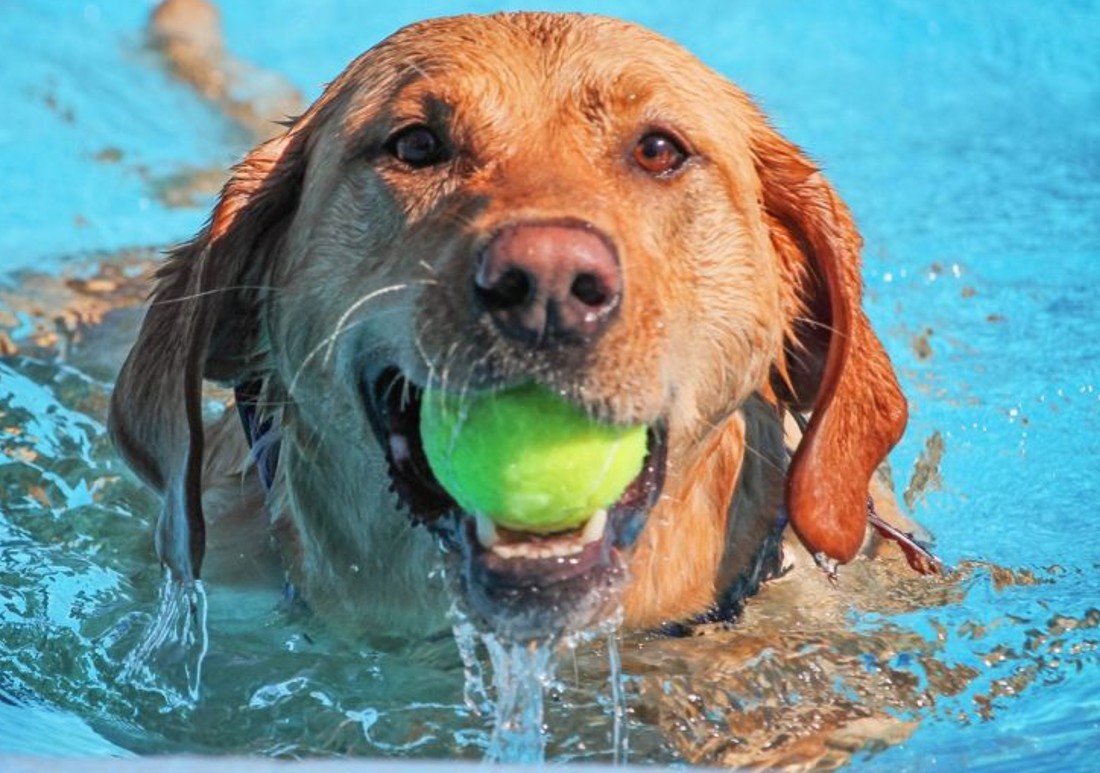Can All Dogs Swim? Tips for Improving Your Dog’s Swimming

Have you ever wondered if all dogs innately know how to doggy paddle? While many dogs are natural swimmers, it’s important to note that not all dogs possess the same level of confidence in the water. Just like humans, some dogs need guidance and encouragement to become comfortable swimmers. Whether you’re introducing a puppy to water or helping an older dog build confidence, improving your dog’s swimming skills can be a rewarding experience. In this guide, we’ll explore the factors influencing a dog’s swimming abilities, tips for introducing them to water, and techniques to enhance their swimming skills so you can have a great experience out in the water together!
Factors Influencing a Dog’s Swimming Abilities
While some dog breeds are well-known for their swimming prowess, it’s not a universal trait among all dogs. The factors that influence a dog’s swimming abilities include breed characteristics, age, past experiences with water, and individual temperament. Breeds like Labradors, Retrievers, and Spaniels often have a natural affinity for water due to their history as hunting and water-retrieving breeds. However, other breeds with shorter legs or less buoyant body structures might require more assistance.
Tips for Introducing Your Dog to Water
Start Slowly
If your dog is new to swimming, begin with shallow water and gradual entries. Let them wade in at their own pace, using positive reinforcement like treats and praise to make the experience enjoyable.
Positive Association
Create a positive association with water by bringing your dog’s favorite toys or treats. Gradually move these items into deeper water to encourage your dog to venture further. Remember, life jackets for dogs are a must. Even if your dog can swim, a well-fitting life jacket provides added safety and buoyancy, especially during initial swimming lessons. This helps build their confidence in the water.
Be a Role Model
If you’re a confident swimmer, getting in the water with your dog can help boost their confidence. Your presence and reassurance can alleviate their fears.
Techniques for Improving Your Dog’s Swimming Skills
Positive Reinforcement
Use treats, toys, and praise to encourage your dog’s progress in the water. Celebrate even small achievements to boost their confidence.
Gradual Progression
As your dog becomes more comfortable, gradually move into deeper water. Stay close and let them swim short distances before returning to shallower areas.
Practice Retrieving
Throwing a toy into the water for your dog to retrieve can be a fun and effective way to improve their swimming skills. Start in shallow water and gradually increase the distance.
Use a Floatation Device
If your dog is still building confidence, a floatation device can help them stay afloat comfortably. This allows them to focus on their swimming technique without struggling to stay above water.
Regular Practice
Consistency is key. Regular swimming sessions help your dog build muscle strength and improve their swimming technique over time.
Safety Precautions
Supervision
Always supervise your dog while they’re in the water, especially if they’re new to swimming. Accidents can happen, and it’s important to be close by to assist them.
Rest Breaks
Like humans, dogs can get tired while swimming. Provide breaks on dry land to prevent exhaustion and ensure they have a chance to rest. Have drinking water readily available.
Freshwater Rinse
After swimming in pools, lakes, or oceans, rinse your dog with freshwater to remove any chemicals or salt that can irritate their skin.
Final Note!
While not all dogs are natural swimmers, with patience, positive reinforcement, and gradual exposure, you can help your canine companion become a confident swimmer. By understanding the factors influencing their swimming abilities, using techniques for introducing them to water, and practicing safety you can provide your dog with a safe and enjoyable swimming experience. Whether it’s for exercise, play, or simply cooling off on a hot day, improving your dog’s swimming skills opens up a whole new world of aquatic fun for both of you and your pet.
Your Pet’s Best Interest, Always
At Pet Institute, we take pet care seriously. We're dedicated to transparency, impartiality, and the well-being of your pets in every article, review, and recommendation we provide. Our unwavering commitment to these principles ensures that you, our valued reader, always receive reliable and unbiased information. Let us be your trusted guide in the world of pet care and companionship.